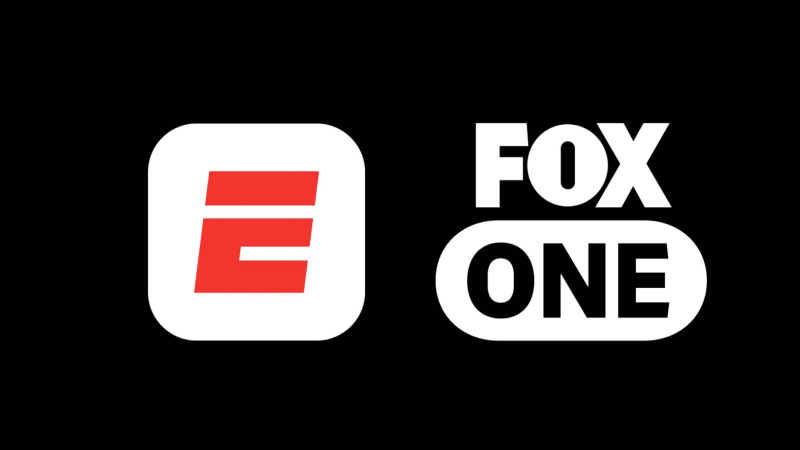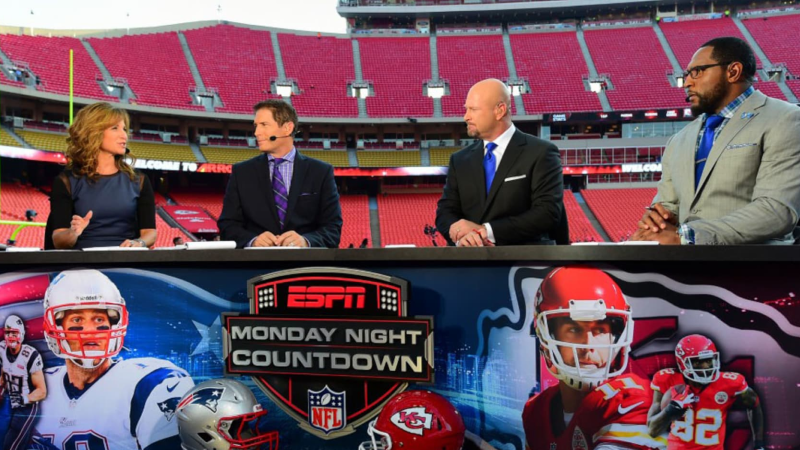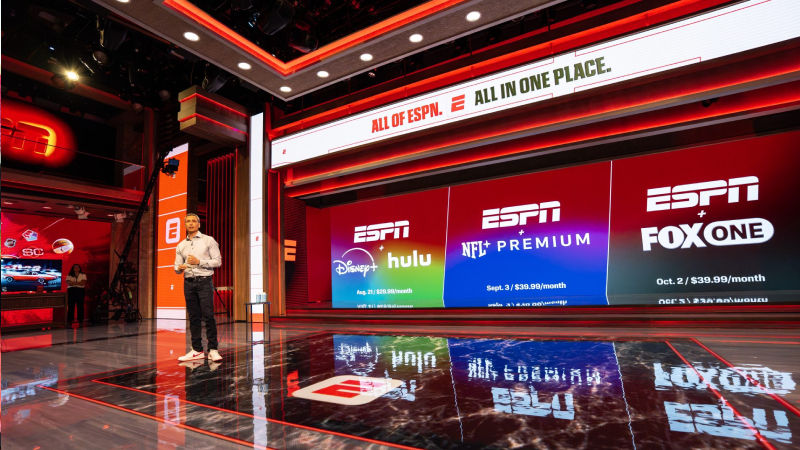Live Sports Streaming & New Bundles: ESPN and Fox Lead the Charge
If there is anything still generating large viewership numbers when it comes to live broadcasts, it’s sports. Regardless of continent or country, live sports remain the main magnet for people to turn on the TV, gaze at the laptop, the tablet or phone and follow the drama as it happens.

In the U.S. alone, nearly 80% of the Top 100 most-viewed shows are sports events, which in times of constantly declining audiences means “guaranteed” top ratings. Sports is also the last package to go when subscribers quit their pay TV or streaming service. So, it is no surprise that the big TV players and streaming giants have been increasing their investments in sports rights in the last two years. One of the flashiest examples of this was Netflix’s first ever NFL Christmas Gameday last year which became the most streamed NFL games in U.S. history with more than 26.5 million viewers there, and over 30 million globally. Netflix is now reportedly acquiring MLB rights as well.
The “traditional” players are not lagging behind either. The recent decision of RTL Group to acquire the German Sky is a very good example of an attempt to consolidate some of the most popular sports rights “under one roof”. In the UK, live rugby and football continue to break records on Free TV and recently BBC Sport announced that it is also bringing back live boxing broadcasts with the battle for the British Heavyweight Title.
The increased hunger for sports among the streamers and broadcasters naturally leads to higher prices for the end users, and this constantly rising inflation leads to breaking points where people are forced to choose which service to keep because they can’t afford to pay for all of them. So, lowering the price as much as possible becomes key for those who hold the rights. A very good example came from France this year, where the LFP decided to drop negotiations with cable and streaming players and launch its own DTC streamer. This proved to be a successful model with over a million subscribers joining the service by mid-September.
In the States, if two years ago the big sports networks relied mostly on cable TV bundles, this year for the first time they started diversifying their offers with streaming bundles, again with the idea to offer a slightly lower price with more options to their users.

In late August, ESPN and Fox launched their direct-to-consumer services, which include all of the sports rights currently available to their cable customers. ESPN’s service, titled ESPN, includes a slew of new fan-centric features, like an in-app merchandise store powered by Fanatics, data-filled portals linked to ESPN Bet and ESPN Fantasy and a multi-view option that allows fans to watch multiple live games at once. Fox One, also provides multi-view functionality and new features including unlimited storage for livestream recordings, a personalized content library and short clips to help users catch up on games.
Both services are available to ESPN and Fox’s existing cable subscribers at no extra cost. ESPN’s new service is also available as a bundle with Disney+ and Hulu.
The pricing: $29.99 a month for ESPN and $19.99 a month for Fox One, and as of October 2 - $39.99 per month for the bundled apps. ESPN also offers its app as a bundle with Disney’s other streaming services, Disney+ and Hulu, for $35.99 a month. That Disney bundle costs a discounted $29.99 a month for the first 12 months — the same price as the stand-alone app.
The launch of this bundle was preceded by the failure of another, larger project called Venu Sports which aimed to unite the sports packages of Disney, Fox and Warner Bros. Discovery for the price of $42.99. Legal issues and the lack of major sports events from other big broadcast players like Paramount and NBCUniversal led to the folding of this “super sports streamer”.
Recently, Forbes analyzed the new bundling strategy, noting that “the need for an all-in-one sports app stems from the continued collapse of the traditional cable bundle, and the resulting fragmentation consumers experience via streaming. So realistically, the easiest solution to this problem could be the very cable structures that streaming once seemed to (positively) fight against.”

In other words, eventually streaming will turn into the “new cable” with its own various types of sports packages. But the question remains what would be the price, both for the media companies and their users? Streamers have been losing money for the last five years and are still very far from breakeven while they need to keep pumping money into content to keep the users “hooked”, so they don’t lose even more money.
In late September, Barclays Research analyzed how the ESPN DTC app could affect Disney’s numbers as it controls more than 40% of total sports programming on legacy networks.
The brokerage projected ESPN’s new service could add 5 million to 6 million subscribers in the next couple of years. By late August, it already had over a million, according to estimates.
Barclays forecast that Disney’s consolidated sports segment revenue and operating income growth of about 2.5% and 2% compounded annually between 2025 and 2030, above consensus expectations. They assumed 1% growth in aggregate viewing hours and 2% annual pricing growth going forward.
Barclays estimated ESPN’s affiliate revenue at $13 per subscriber per month, rising 7% annually for the next three years and 5% thereafter. Including advertising, current revenue from linear subscribers is about $19 to $20 per month, according to the report.
The investor researchers included sensitivity analysis showing the breakeven point for ESPN streaming at 9.5 million subscribers if considered alone, but only 5 million when accounting for reduced churn and average revenue per user gains from bundling with Disney+ and Hulu, adding that: “The 5m breakeven threshold is in line with Venu Sports’s goal,” while warning that subscriber churn tied to the sports calendar remains a risk.
The analysts of Barclays concluded that: “ESPN’s streaming service could be more than just a defensive service to recapture subs dropping out of the pay TV ecosystem and could contribute to long-term earnings growth at Disney.”

The Disney managers do understand the potential. ESPN chairman Jimmy Pitaro even called the launch of the app “another industry-shaping moment.” He also clarified: “We’re also going to be paying a lot of attention to engagement within the ESPN app. However you’re subscribed, we want you to experience ESPN through the ESPN app.”
Another novelty that U.S. sports media also noted is that for the first time in ESPN’s 46-year history, there will not necessarily be a clear, public, and total measure of the network’s subscriber base.
The “traditional” players are not lagging behind either. The recent decision of RTL Group to acquire the German Sky is a very good example of an attempt to consolidate some of the most popular sports rights “under one roof”. In the UK, live rugby and football continue to break records on Free TV and recently BBC Sport announced that it is also bringing back live boxing broadcasts with the battle for the British Heavyweight Title.
The increased hunger for sports among the streamers and broadcasters naturally leads to higher prices for the end users, and this constantly rising inflation leads to breaking points where people are forced to choose which service to keep because they can’t afford to pay for all of them. So, lowering the price as much as possible becomes key for those who hold the rights. A very good example came from France this year, where the LFP decided to drop negotiations with cable and streaming players and launch its own DTC streamer. This proved to be a successful model with over a million subscribers joining the service by mid-September.
In the States, if two years ago the big sports networks relied mostly on cable TV bundles, this year for the first time they started diversifying their offers with streaming bundles, again with the idea to offer a slightly lower price with more options to their users.

In late August, ESPN and Fox launched their direct-to-consumer services, which include all of the sports rights currently available to their cable customers. ESPN’s service, titled ESPN, includes a slew of new fan-centric features, like an in-app merchandise store powered by Fanatics, data-filled portals linked to ESPN Bet and ESPN Fantasy and a multi-view option that allows fans to watch multiple live games at once. Fox One, also provides multi-view functionality and new features including unlimited storage for livestream recordings, a personalized content library and short clips to help users catch up on games.
Both services are available to ESPN and Fox’s existing cable subscribers at no extra cost. ESPN’s new service is also available as a bundle with Disney+ and Hulu.
The pricing: $29.99 a month for ESPN and $19.99 a month for Fox One, and as of October 2 - $39.99 per month for the bundled apps. ESPN also offers its app as a bundle with Disney’s other streaming services, Disney+ and Hulu, for $35.99 a month. That Disney bundle costs a discounted $29.99 a month for the first 12 months — the same price as the stand-alone app.
The launch of this bundle was preceded by the failure of another, larger project called Venu Sports which aimed to unite the sports packages of Disney, Fox and Warner Bros. Discovery for the price of $42.99. Legal issues and the lack of major sports events from other big broadcast players like Paramount and NBCUniversal led to the folding of this “super sports streamer”.
Recently, Forbes analyzed the new bundling strategy, noting that “the need for an all-in-one sports app stems from the continued collapse of the traditional cable bundle, and the resulting fragmentation consumers experience via streaming. So realistically, the easiest solution to this problem could be the very cable structures that streaming once seemed to (positively) fight against.”

In other words, eventually streaming will turn into the “new cable” with its own various types of sports packages. But the question remains what would be the price, both for the media companies and their users? Streamers have been losing money for the last five years and are still very far from breakeven while they need to keep pumping money into content to keep the users “hooked”, so they don’t lose even more money.
In late September, Barclays Research analyzed how the ESPN DTC app could affect Disney’s numbers as it controls more than 40% of total sports programming on legacy networks.
The brokerage projected ESPN’s new service could add 5 million to 6 million subscribers in the next couple of years. By late August, it already had over a million, according to estimates.
Barclays forecast that Disney’s consolidated sports segment revenue and operating income growth of about 2.5% and 2% compounded annually between 2025 and 2030, above consensus expectations. They assumed 1% growth in aggregate viewing hours and 2% annual pricing growth going forward.
Barclays estimated ESPN’s affiliate revenue at $13 per subscriber per month, rising 7% annually for the next three years and 5% thereafter. Including advertising, current revenue from linear subscribers is about $19 to $20 per month, according to the report.
The investor researchers included sensitivity analysis showing the breakeven point for ESPN streaming at 9.5 million subscribers if considered alone, but only 5 million when accounting for reduced churn and average revenue per user gains from bundling with Disney+ and Hulu, adding that: “The 5m breakeven threshold is in line with Venu Sports’s goal,” while warning that subscriber churn tied to the sports calendar remains a risk.
The analysts of Barclays concluded that: “ESPN’s streaming service could be more than just a defensive service to recapture subs dropping out of the pay TV ecosystem and could contribute to long-term earnings growth at Disney.”

The Disney managers do understand the potential. ESPN chairman Jimmy Pitaro even called the launch of the app “another industry-shaping moment.” He also clarified: “We’re also going to be paying a lot of attention to engagement within the ESPN app. However you’re subscribed, we want you to experience ESPN through the ESPN app.”
Another novelty that U.S. sports media also noted is that for the first time in ESPN’s 46-year history, there will not necessarily be a clear, public, and total measure of the network’s subscriber base.









































